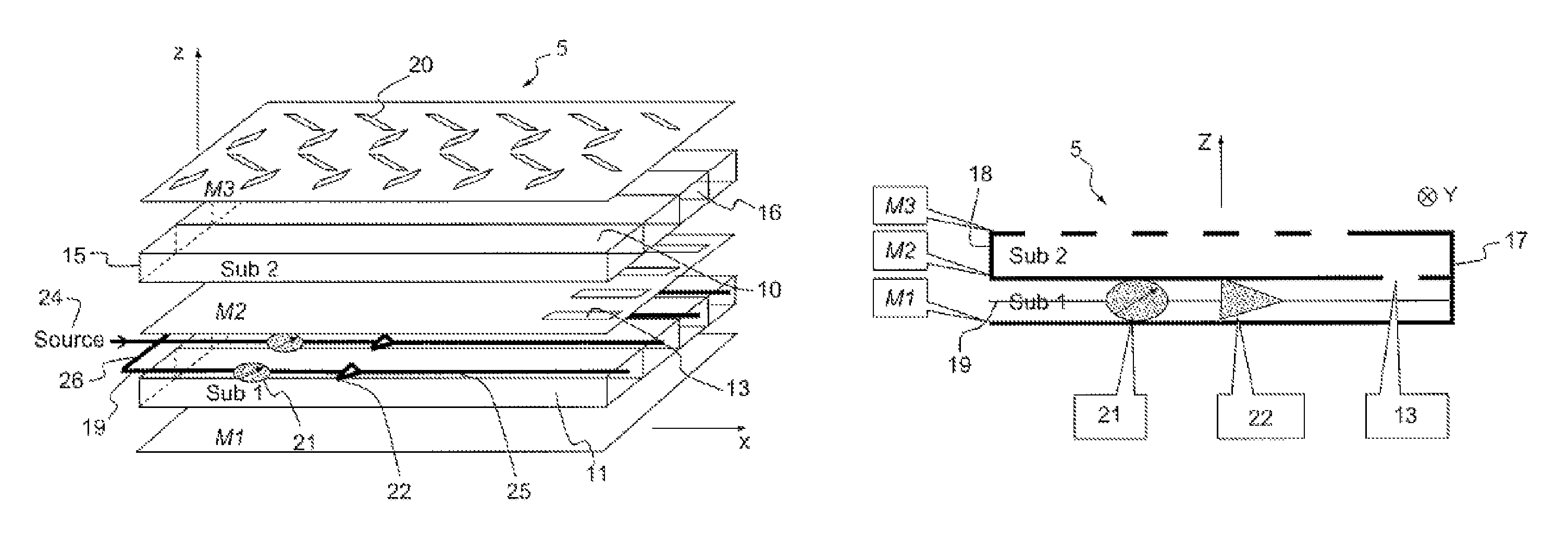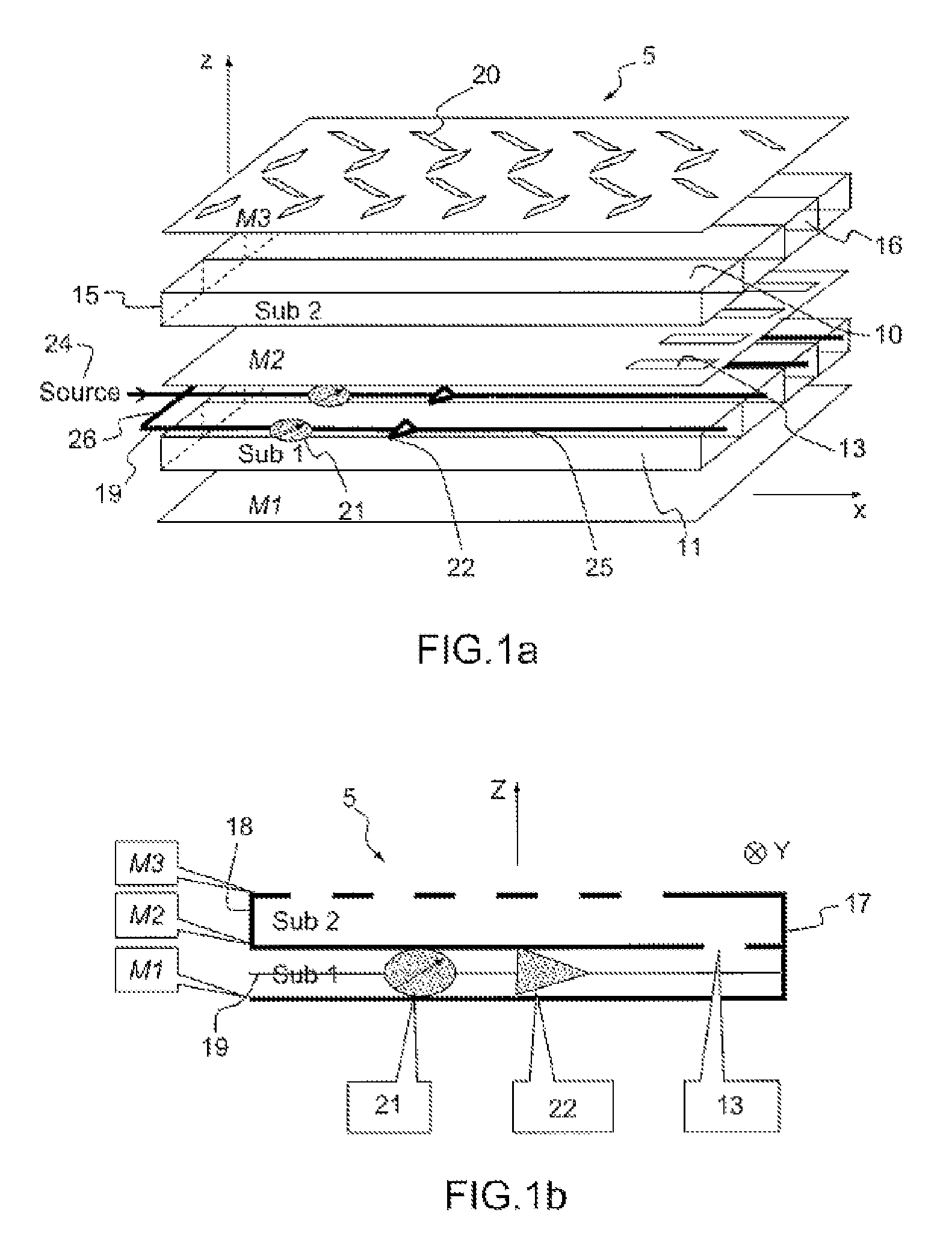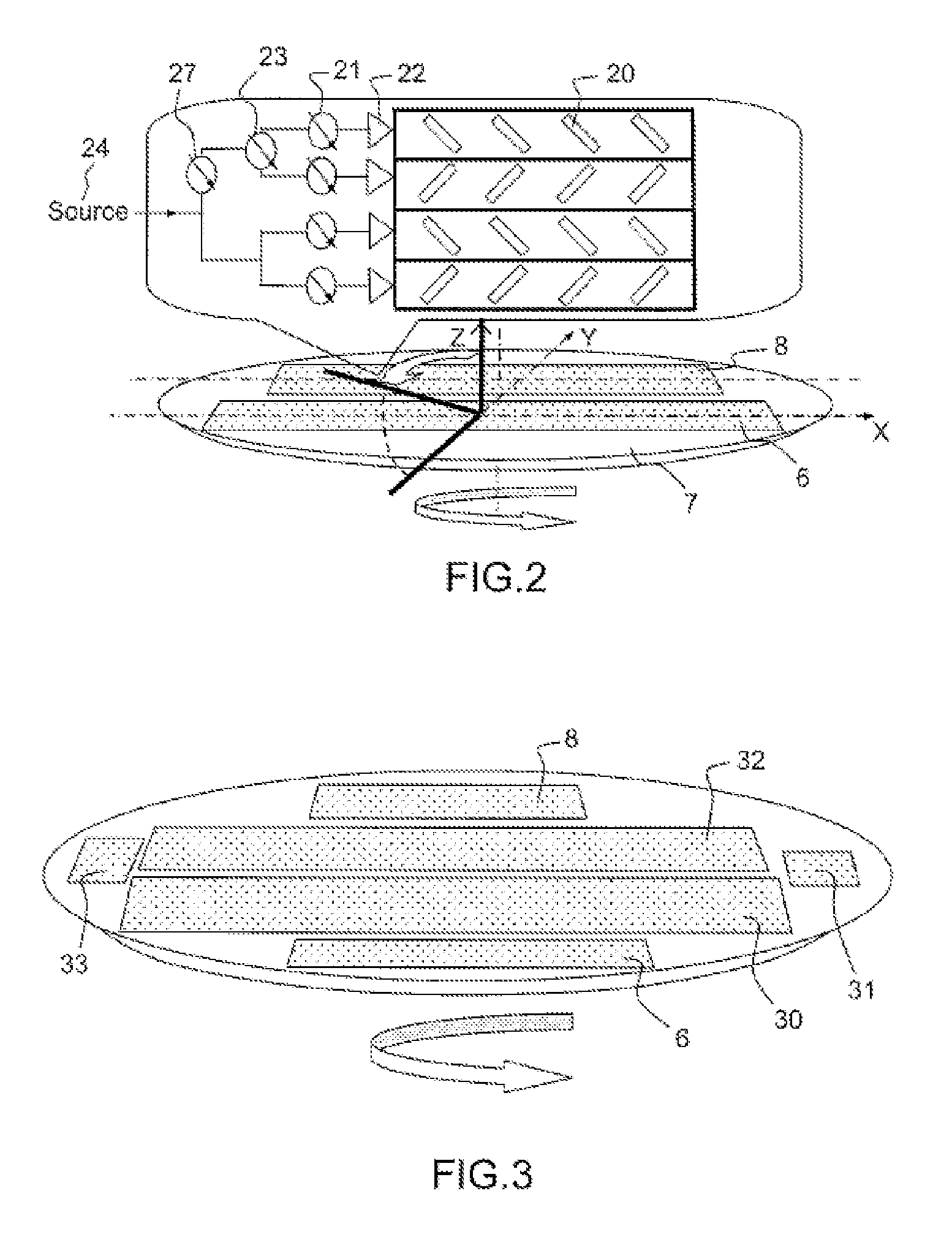On-board directional flat-plate antenna, vehicle comprising such an antenna, and satellite telecommunication system comprising such a vehicle
a flat-plate antenna and directional antenna technology, applied in the field of satellite telecommunication system comprising such a vehicle, can solve the problems of crippling the cost and complexity of antennas for an application to transport means, too large for future high-speed trains, and low transmission bitrate for communications. , to achieve the effect of low cost, simple implementation and compact heigh
- Summary
- Abstract
- Description
- Claims
- Application Information
AI Technical Summary
Benefits of technology
Problems solved by technology
Method used
Image
Examples
Embodiment Construction
[0025]The plane antenna represented partially in FIGS. 1a and 1b is of tri-plate structure. It comprises an array 5 of radiating-slot waveguides comprising an alternating succession of three metallic plates M1, M2, M3 respectively lower, intermediate and upper, superposed in parallel one above the other, and of two dielectric substrates Sub1, Sub2, respectively lower and upper, inserted between two consecutive metallic plates. The planes of the various layers of the antenna are parallel to a plane XY. The height of the antenna is along an axis Z orthogonal to the XY plane. The upper dielectric substrate Sub2 supports the radiating-slot waveguides 10, and the lower substrate Sub1 supports waveguides 11 intended to individually feed each radiating-slot waveguide 10 via a microwave signal. The antenna having to operate in the Ka-band, in order to comply with the standards imposed in this operating domain, it must emit waves under a circular polarization. Therefore, according to the inv...
PUM
 Login to View More
Login to View More Abstract
Description
Claims
Application Information
 Login to View More
Login to View More - R&D
- Intellectual Property
- Life Sciences
- Materials
- Tech Scout
- Unparalleled Data Quality
- Higher Quality Content
- 60% Fewer Hallucinations
Browse by: Latest US Patents, China's latest patents, Technical Efficacy Thesaurus, Application Domain, Technology Topic, Popular Technical Reports.
© 2025 PatSnap. All rights reserved.Legal|Privacy policy|Modern Slavery Act Transparency Statement|Sitemap|About US| Contact US: help@patsnap.com



